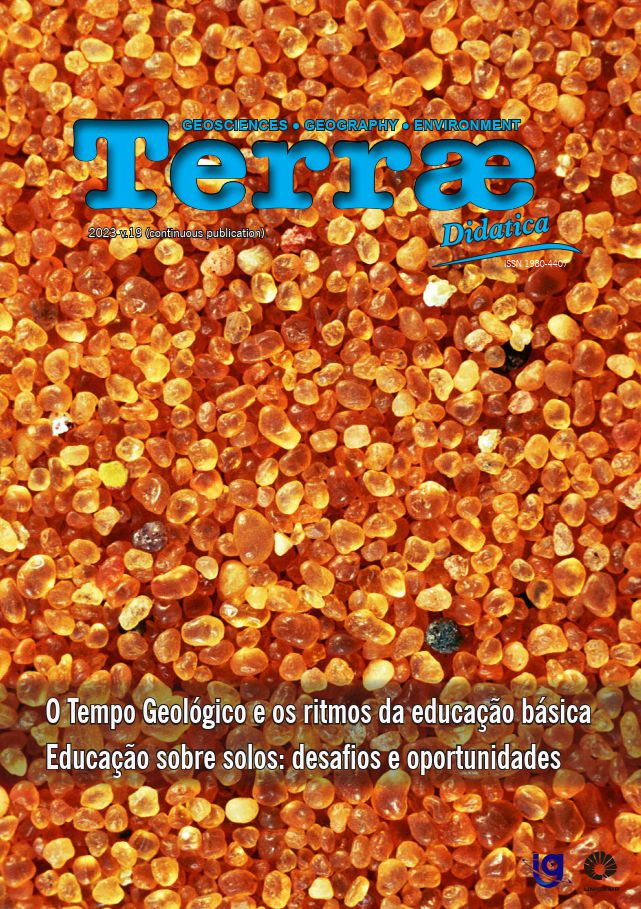Abstract
Introduction. Geosciences are part of the Natural Sciences field in the BNCC and are generally taught in subjects such as Science, Geography, and Natural Sciences and their Technologies. However, classes are often lecture-based, which limits student engagement. The geoscience quiz emerges as a pedagogical alternative to make geoscience education more attractive and effective, allowing students to explore geological concepts interactively, stimulating their curiosity and motivation to learn. Methodology. In the case of the Seridó UNESCO Global Geopark (SGMU), the geological quiz celebrated Geologist's Day and promoted knowledge about the local geopatrimony. Results. 115 high school’s students from the Mining technician courses at the Manoel Salustino State School and the Federal Institute of Rio Grande do Norte, Parelhas Campus, participated. Conclusion. With the theme "Everyday Geology," the event interpreted the Geopark's geoheritage from the perspective of Geosciences, generating many students’ creations.
References
Alencar, R., Nascimento, R. S., & Guimarães, G. B. (2012). Geociências no ensino fundamental: ciências ou geografia? Da história da Terra à paisagem local através da geodiversidade da ilha de Santa Catarina. Simpósio Nacional de Ensino de Ciências e Tecnologias. UTFPR: Ponta Grossa. URL: http://www.sinect.com.br/anais2012/html/artigos/ensino%20cie/35.pdf. Acesso 30.08.2023.
Brasil. Ministério da Educação. (2018). Base Nacional Comum Curricular. Brasília: MEC. URL: http://basenacionalcomum.mec.gov.br/. Acesso 27.08.2023.
Gomes, J. A. T., & A. M. Sanchez, E. (2018). Geogame: uma alternativa lúdica para o ensino de Geociências. Revista Espinhaço, 7(1). doi: 10.5281/zenodo.3954939.
Hernández-Barco, M. A., Sánchez-Martín, J., & Corbacho-Cuello, I. (2022). Science Fair Project in the Teacher Training Process: Its Emotional Response and Implications. In Handbook of Research on the Influence and Effectiveness of Gamification in Education. IGI Global. p. 339-359.
Musacchio, G., Piangiamore, G. L., D’Addezio, G., Solarino, S., & Eva, E. (2015). “Scientist as a game”: learning geoscience via competitive activities. Annals of Geophysics, 58(3), S0328-S0328. URL: https://pdfs.semanticscholar.org/7165/5f12a06d0cf0bad006e0bda5f287820efe63.pdf. Acesso 20.10.2023.
Pinto, J. R. (1997). Corpo, movimento e educação. O desafio da criança e adolescente deficientes sociais. Rio de Janeiro: Sprint. 364p. (Vol. 1).

This work is licensed under a Creative Commons Attribution 4.0 International License.
Copyright (c) 2023 Marília Cristina Santos Souza Dias, Silas Samuel dos Santos Costa, Rodrigo Libório Ferreira Canova, Jhordan Nascimento Dias Andrade, Dara Luany Alves Fernandes, Adriano Henrique Andrade de Aguiar


